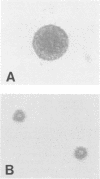Abstract
Two media systems were compared for isolation of Ureaplasma urealyticum and genital Mycoplasma sp. System 1 (S-1) consisted of arginine agar and an arginine biphasic medium for isolation of Mycoplasma sp. and urea agar and urea broth for isolation of U. urealyticum. System 2 (S-2) utilized Boston broth, which is a urea-containing broth, and A7 agar, both of which support the growth of both species. Urine samples, some freshly collected and some known-positive frozen samples, were used as inocula for the two media systems. With S-1, U. urealyticum was recovered in 68% of U. urealyticum-positive cultures: 58% were detected in urea broth, and 60% were identified on urea agar. When the S-2 system was used for culture of the same samples. U. urealyticum was recovered in 98% of the cultures, with 94% detected in Boston broth and 92% identified on A7 agar. Mycoplasma sp. was recovered in S-1 and S-2 in 97 and 100% of Mycoplasma sp.-positive cultures, respectively. The S-1 arginine broth gave positive results for 89% of the cultures, and the arginine agar was positive for 97% of the cultures. The S-2 Boston broth and A7 agar gave positive results for 92 and 97% of the cultures, respectively. For the isolation of U. urealyticum, colony counts were higher, growth was seen sooner, and colonies were larger when the S-2 media system was used. Overall, the cost per test of the S-2 system was less both in technologist time and in reagent costs.
Full text
PDF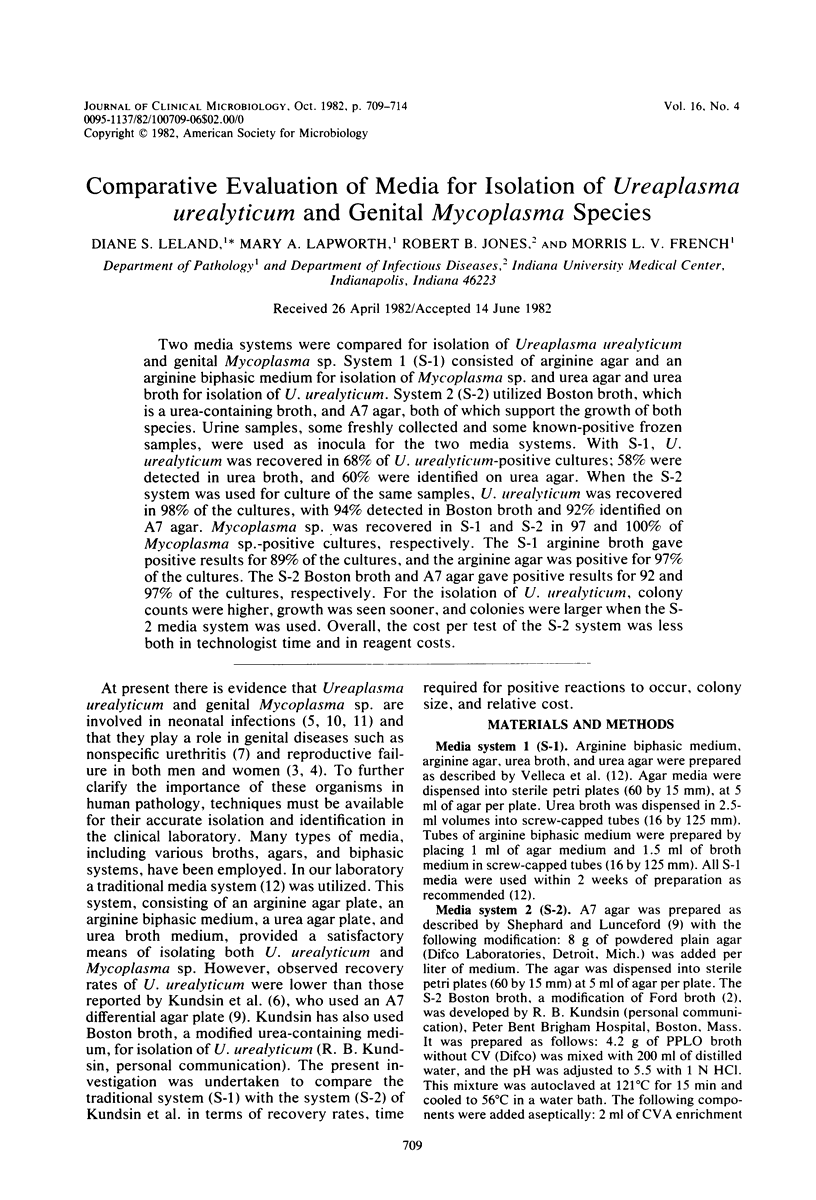
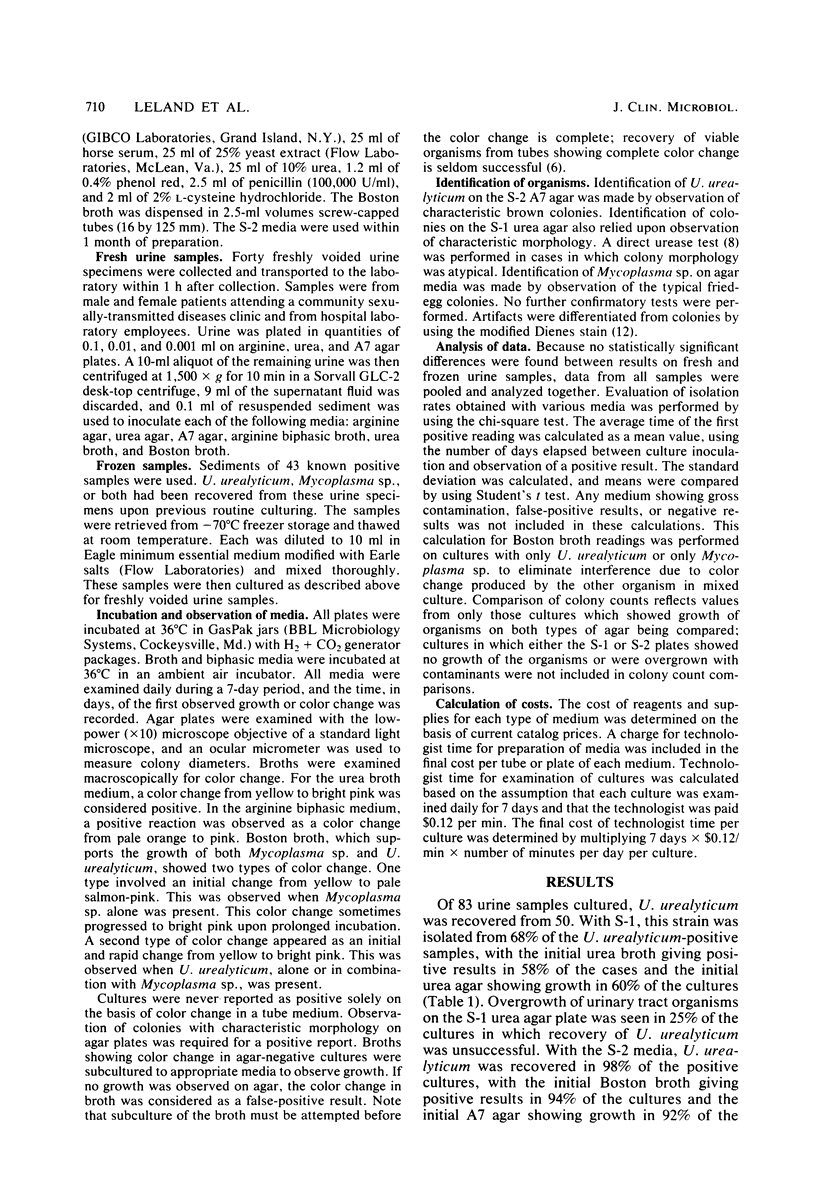
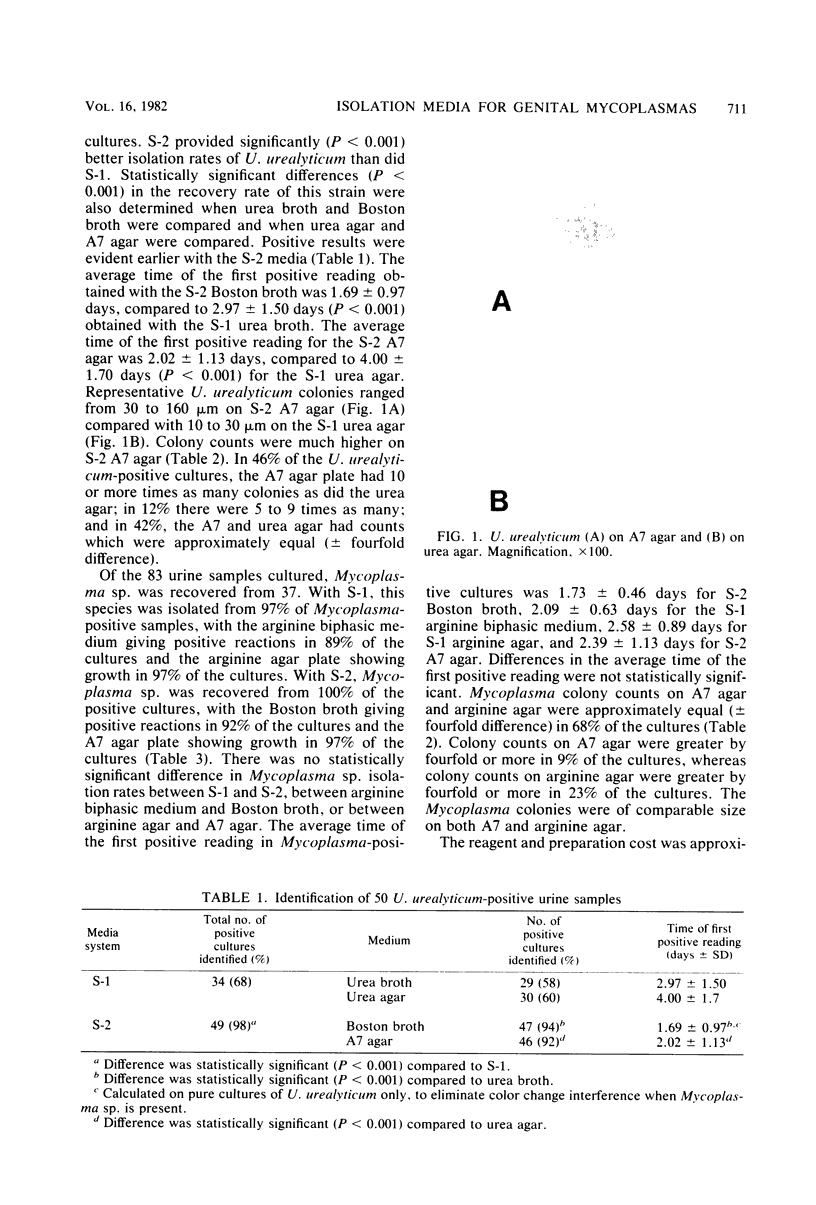
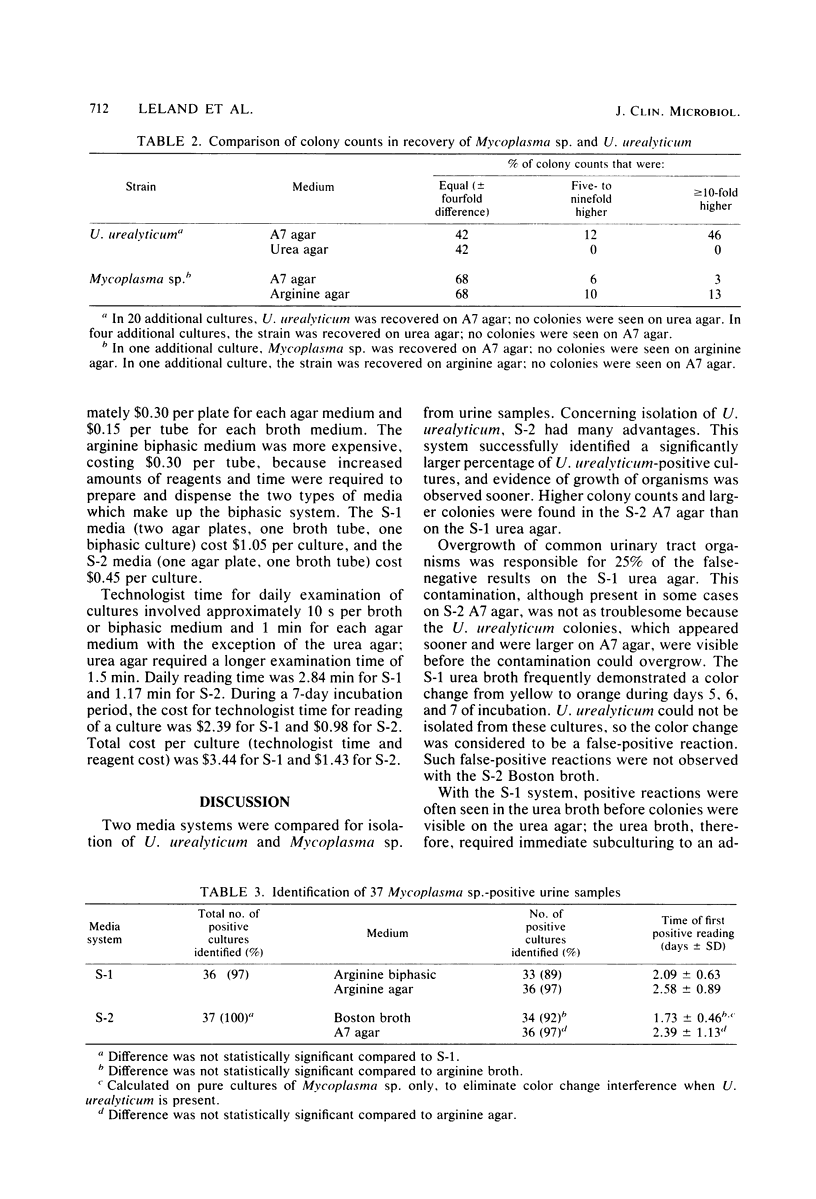
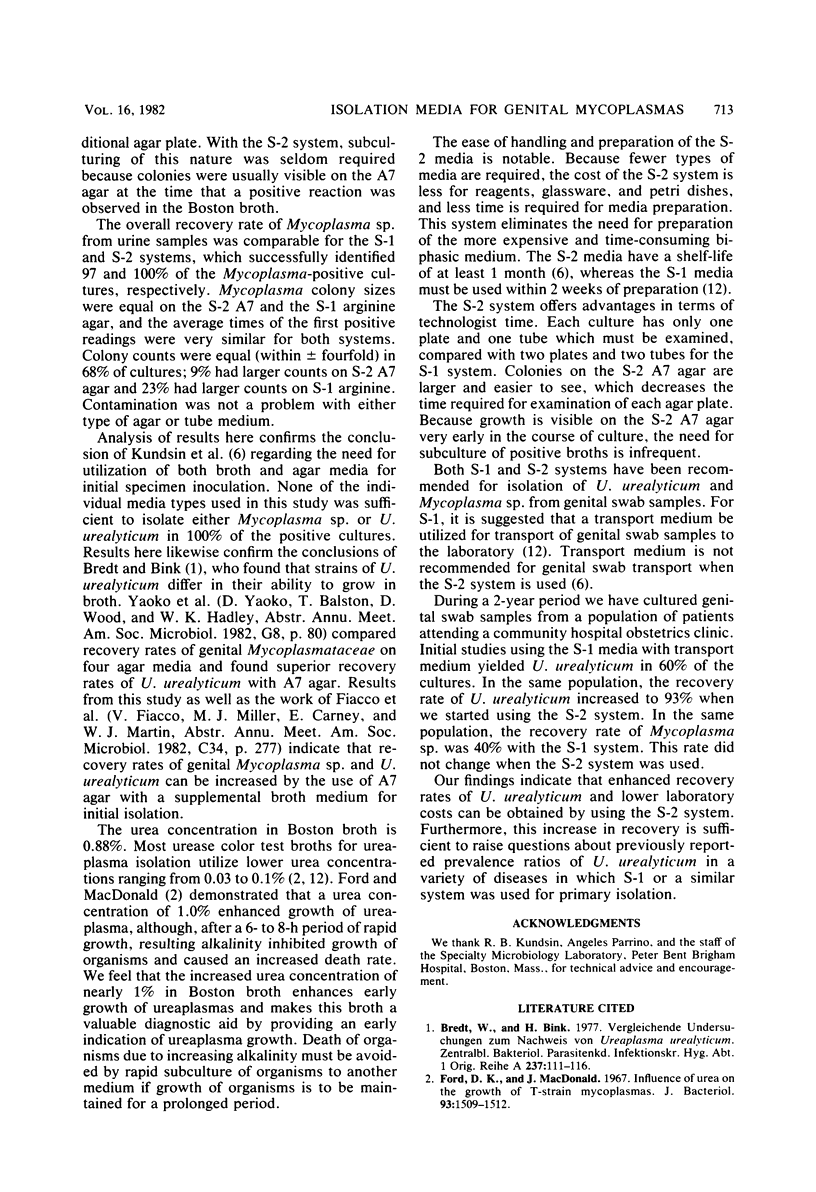
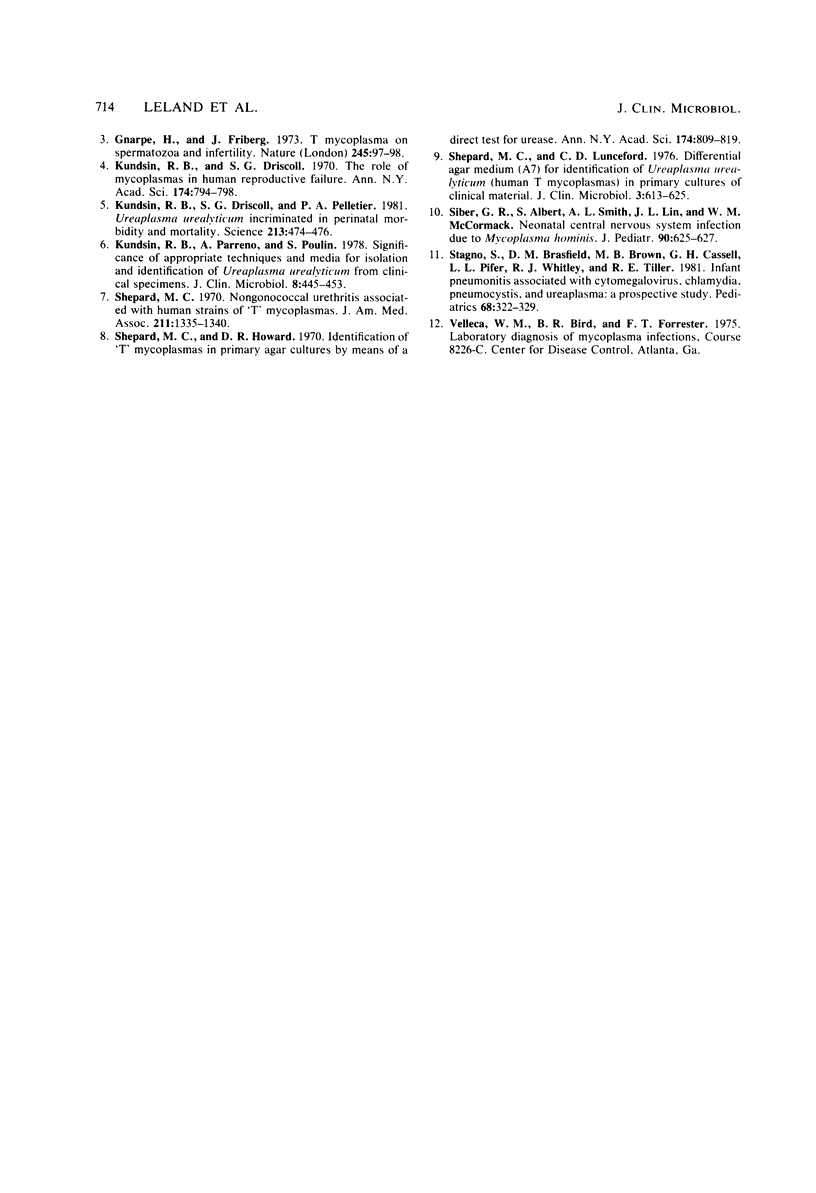
Images in this article
Selected References
These references are in PubMed. This may not be the complete list of references from this article.
- Bredt W., Bink H. Vergleichende Untersuchungen zum Nachweis von Ureaplasma urealyticum. Zentralbl Bakteriol Orig A. 1977 Feb;237(1):111–116. [PubMed] [Google Scholar]
- Ford D. K., MacDonald J. Influence of urea on the growth of T-strain mycoplasmas. J Bacteriol. 1967 May;93(5):1509–1512. doi: 10.1128/jb.93.5.1509-1512.1967. [DOI] [PMC free article] [PubMed] [Google Scholar]
- Gnarpe H., Friberg J. T mycoplasmas on spermatozoa and infertility. Nature. 1973 Sep 14;245(5420):97–98. doi: 10.1038/245097a0. [DOI] [PubMed] [Google Scholar]
- Kundsin R. B., Driscoll S. G., Pelletier P. A. Ureaplasma urealyticum incriminated in perinatal morbidity and mortality. Science. 1981 Jul 24;213(4506):474–475. doi: 10.1126/science.7244646. [DOI] [PubMed] [Google Scholar]
- Kundsin R. B., Driscoll S. G. The role of mycoplasmas in human reproductive failure. Ann N Y Acad Sci. 1970 Oct 30;174(2):794–797. doi: 10.1111/j.1749-6632.1970.tb45596.x. [DOI] [PubMed] [Google Scholar]
- Kundsin R. B., Parreno A., Poulin S. Significance of appropriate techniques and media for isolation and identification of Ureaplasma urealyticum from clinical specimens. J Clin Microbiol. 1978 Oct;8(4):445–453. doi: 10.1128/jcm.8.4.445-453.1978. [DOI] [PMC free article] [PubMed] [Google Scholar]
- Shepard M. C., Howard D. R. Identification of "T" mycoplasmas in primary agar cultures by means of a direct test for urease. Ann N Y Acad Sci. 1970 Oct 30;174(2):809–819. doi: 10.1111/j.1749-6632.1970.tb45598.x. [DOI] [PubMed] [Google Scholar]
- Shepard M. C., Lunceford C. D. Differential agar medium (A7) for identification of Ureaplasma urealyticum (human T mycoplasmas) in primary cultures of clinical material. J Clin Microbiol. 1976 Jun;3(6):613–625. doi: 10.1128/jcm.3.6.613-625.1976. [DOI] [PMC free article] [PubMed] [Google Scholar]
- Shepard M. C. Nongonococcal urethritis associated with human strains of "T" mycoplasmas. JAMA. 1970 Feb 23;211(8):1335–1340. [PubMed] [Google Scholar]
- Stagno S., Brasfield D. M., Brown M. B., Cassell G. H., Pifer L. L., Whitley R. J., Tiller R. E. Infant pneumonitis associated with cytomegalovirus, Chlamydia, Pneumocystis, and Ureaplasma: a prospective study. Pediatrics. 1981 Sep;68(3):322–329. [PubMed] [Google Scholar]



